Welcome to my world (well, as of late).
This is the small hole in the glass you get to shoot through when you’re shooting hockey (The NHL made the holes smaller recently to protect the photographers and players). The one here is from Saturday night at the Tampa Bay Times Forum (the arena where the Tampa Bay Lightning play their home games).
I’ve talked with other photographers shooting hockey, and they tell me they would kill to have any hole in the glass, because they have to shoot through the glass, which is often 1-inch thick and almost guarantees their shots won’t be nice and sharp, so I really shouldn’t complain.
Here’ the view if you angle your camera in that hole as far as you possibly can and shoot blindly down the rink (I say blindly, because it would be kinda hard to fit your head in a position that would actually let you look through the viewfinder, but I thought I’d at least show that not matter what, you’re not getting a shot of the other goal, so you’re only going to get the goal you’re positioned right in front of).
The Challenge (Warning: football metaphor coming):
Shooting from the position I was assigned (the shooting positions are assigned before game time by the team photographer, and you stay in that position the entire game), it lets you basically shoot from the back of the goal you’re in front of to the blue line (before you reach center ice). In football terms, that would be like having to shoot from the 5-yard line all game, and you can only shoot from the back of the goal to the 15 yard line. But, you can’t shoot all the end zone, because there’s a big net covering part of the end zone. Because you can only shoot when their action in front of you, it always seems like all the action is at the other goal (which you can’t shoot at all from your position, so you just sit quietly and watch the game).
Dave Black to the rescue
I had really been struggling through the last couple of games, and while I made some progress in game two, I wanted to continue improving (which I knew would eventually come the more games I shot), but Dave Black (the magical wizard of sports photography) was down here at our studio taping some classes for Kelby Training Online, so I tracked him down to get some advice for shooting Saturday night’s Lightning game against the Washington Capitals, and of course, he was a huge help.
Football messed me up
Well, not just football, but for most sports we shoot wide open; usually at f/stops like f/2.8 or f/4, but Dave suggested that I try shooting at f/8, which kind of freaked me out, until he pointed out that in Hockey the fans are right at the glass, and unless I was zoomed in really tight, they were going to be in focus anyway (and I wasn’t going to get those super soft totally out-of-focus backgrounds with the crowd just 2 feet from the players on the boards, which totally made sense. He mentioned that I might have to crank the ISO and I might only get up to f/5.6 but that would help my focus issues, and boy did it ever. Huge difference!
(Above: An iPhone shot taken by the usher of me hand-holding my 200-400mm f/4 from the Mezzanine level shooting position. I had to bump the fill light massively as the original shot had me as a silhouette).
Take the 400mm! (I don’t need it! Yes you do!)
Besides shooting from ice level, we also have the option of shooting overhead (just over the glass) from the Mezzanine level, and I was going to take my 300mm, but Dave thought it might be too short and recommended that I take the 200-400mm instead. Of course, I briefly (and stupidly) argued with Dave, telling him low to the rink the mezzanine level actually was, but once I got there and started shooting (hand held no less—no monopod), I realized (as expected) that Dave was right. I shot out at 400mm the entire time.
It’s like cheating!
I will say this—shooting from above the glass, unobstructed, with a clear view of both goals and pretty much the entire rink was a blast. It was also pretty much like cheating, because you can see everything so darn well. You can follow the play pretty easily and you’re probably not going to miss a goal, so if reporting the news is your goal, it’s perfect. The only problem is; your shots look like you took them from the stands. The just don’t have the impact and feel the ones at ice level do, which explains why I was the only guy shooting from the mezzanine. So, while it great for catching everything, you’re not going to come back with shots that have the impact you want. I only stayed up there one period, and then I went back down to my tiny hole in the glass.
(Above: Lecavalier scores [note the puck behind the goalie] to help the Bolts win 2-1).
Progress Report
Dave’s tips (all of them, not just the two I mentioned here), really helped a lot, and I turned in my best shots yet (but of course, I’m still nowhere near happy with them, but at least things are going in the right direction). My timing is getting better and I’m getting just much more comfortable with my setting and surroundings.
Note to Self: Don’t look at their screens
In the photo room at the end of the night, I made the mistake at looking at Lightning Team Photographer Scott Audette’s shots as they were being uploaded (he is just sick at shooting hockey, and gets incredible shots despite the fact that he can’t shoot high speed because he’s firing strobes overhead. His timing and composition are astounding), and I saw some of Mike Carlson’s shots (he shoots for AP) and although he’s not firing strobes, his shots totally kick butt. He has the perfect shooting position on the ice — he’s behind the goal and to one side, and from there he can shoot end to end no sweat (with a 300mm lens pressed against the hole—he crops out the edges of the hole in post).
Looking at their shots can really bum you out, because I’m not getting shots anything like theirs, so I’ve got a long, long way to go, but hey, at least I made some progress (thanks to Dave and more practice), and that’s all I can hope for at this point in my hockey-shooting journey.
Heading to Dallas and Phoenix
I’m off to do a couple of my seminars this week (link just in case you can go), so I won’t be shooting any hockey this week, but that’s OK — the Lightning’s on the road anyway, but when they get back, I’m back too and I’m hoping I can pick up an assignment to shoot a game or two. Have a great Monday everybody!



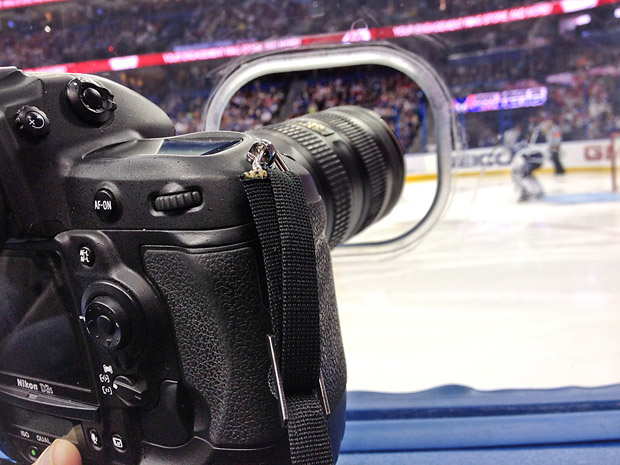
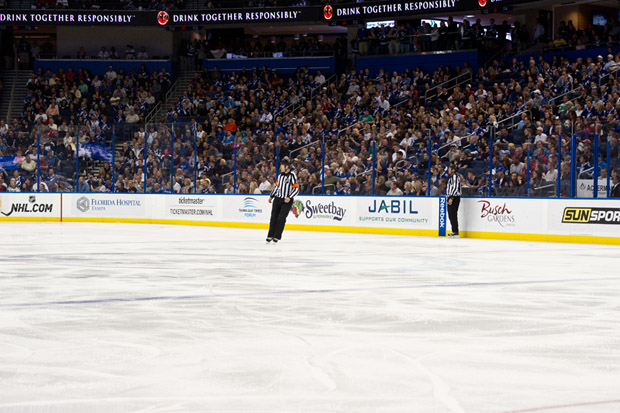
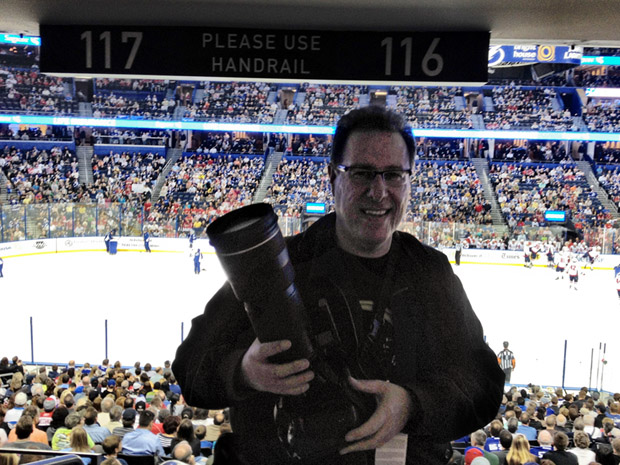
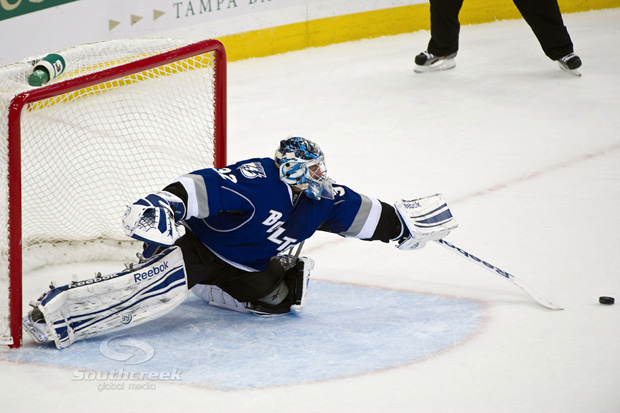
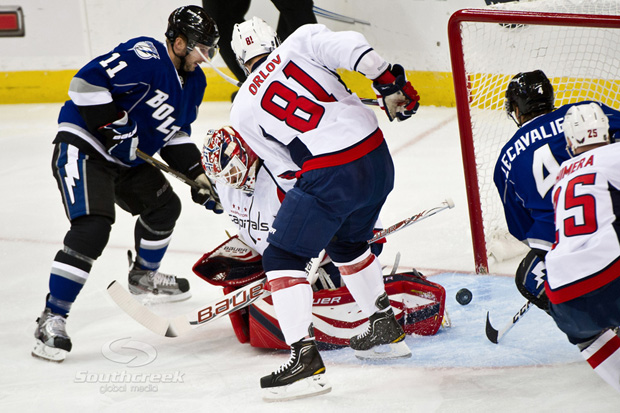
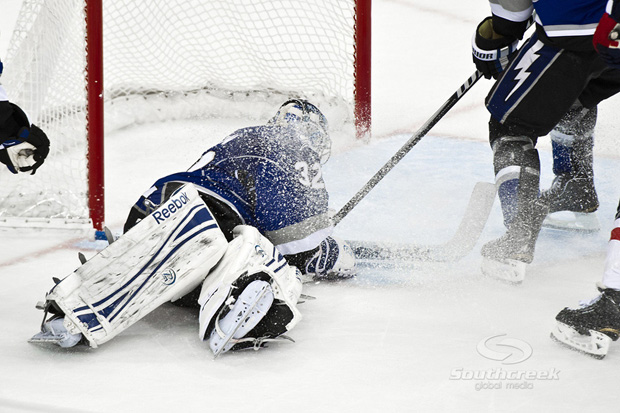
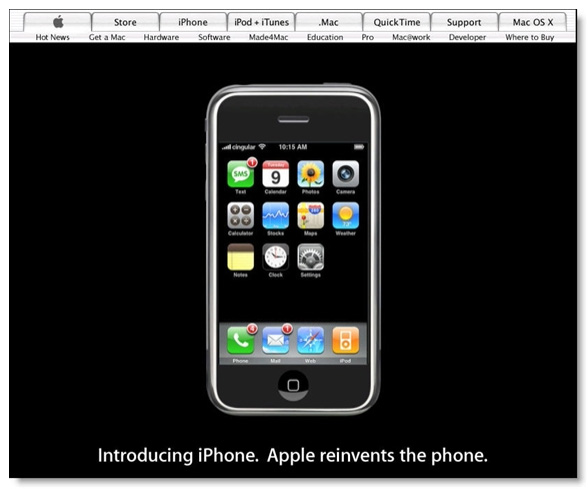
Lecavalier didn’t score his 40th. It was Stamkos.
1st rule of shooting hockey. Learn the sport!!! HA!!!
Seriously Scott. How did the white of the ice affect your shots?
Hi Lou: Thanks for catching that (fixed it). I wound up shooting in Manual Mode, because it kept underexposing everything. In Aperture Priority I would use exposure compensation to overexposure by a stop, but then I just said the heck with it and switched to Manual.
I typically shoot manual for most indoor sporting events. The lighting is pretty even and doesn’t typically change throughout the game. So, I set it for good skin tones at at least 1/1000th and it will usually stay there.
Dallas has a Hokey Team ;)
hi, i am a photographer here in fla, i shoot the panthers games for a few publications. i wanted to ask you, what setting did you finaly go with ? iso ? shutter? f stop ? i usally go with 2.8 at iso 1600 and shutter at 1000 and i get great shots, the f.8 that you spoke of could be intresting
I went with Manual. I set my shutter speed at 1/1000 for a while, and finally changed to 1/800 to keep from pumping up the ISO too much. I mostly shot at f/5.6 but even with the incredibly bright lightning in the Tampa Bay Times Forum (brightest Arena I’ve ever shot in), I was still at 2,500 ISO.
Hi Scott
I’m actually shooting my first Hockey Game on March 30 as part of a meet up group. I believe your previous game you said you used your 70-200. I’m guessing from your lens choice this game that you found it was too short? I thought about using the mamyia lens hood you recommended for football and use that to “cushion” it around hole for ice. Wondered if you tried using it?
Thanks for sharing that advise about stopping down. I would have never thought of that.
I still use the 70-200mm at ice level (that’s it in the top shot). The only time I used the 200-400mm was when I shot from the mezzanine level.
I don’t know if this will help or not but as far as timing goes, most people when watching hockey for the first time or learning to watch hockey always comments on how they can’t follow the puck. First rule in watching hockey, don’t try and follow the puck, learn to anticipate where the puck is going to end up. Once you learn that you’ve got it made. I think if you use that ideology when shooting, it might help you with catching some shots you might ordinarily miss.
Thanks for the tip Stephen. I just got assigned to two more games (next week), and not only does that advice make a lot of sense, I’ll be sure to put that into practice right away. Appreciate it very much! :-)
Glad you are following the hockey scene Scott. Being a die hard hockey fan, it is great getting your opinions on photographing the games and your appreciation for it. Look forward to seeing future posts, keep up the great work!
Do you have to your head back at all times or do you actually get to use the veiwfinder? I’d be nervous as I’ve sat on the glass many times.
Hi Cody: I usually have my eye on the viewfinder (well, now I do. The first period I shot I couldn’t even get my lens up to the glass I was so freaked out), but I try to keep my other eye open, so I don’t get bonked by players crashing into the boards while I’m off following the puck somewhere else. That’s what the veterans there warned me about.
Scott,
I’ve been following your work and your educational books and videos for a few years now, and I’ve learned so much from you and all the ‘Photoshop Guys’ as well as the photography instructors on KelbyTraining. The point is, I respect you and your work greatly, and now even moreso that you are sharing your progress through a photography discipline (hockey) that is totally new to you. It’s not always easy for a teacher to admit, much less show, that he is still learning the craft that he teaches, but your openness and humility is once again inspiring and instructive.
Thanks for all you do!
I was in Tampa for the weekend, down from Ottawa, Canada, and was a couple sections over from where your were in the iPhone picture. Would’ve been great to meet you. It was a great game and you are so fortunate to have access to those holes in the glass. When I shoot rec hockey with my low end equipment the dirty, scuffed up glass makes life more difficult in already poorly lit rinks. I had one opportunity to shoot a rec game at the Scotiabank Place rink in Ottawa (home of the Senators) and those holes made a huge difference.
I’m thrilled that you are talking about your hockey shooting experiences and sharing what you are learning because it is a great opportunity for us to see how you learn and maybe pick up a few tricks of our own.
Now let me know when you start shooting Ultimate Frisbee pictures too. I can use definitely use some work there. And you have one of the best opportunities in your own back yard every fall when the USA Ultimate Championship happens in Sarasota. It would be really neat how you handle that sport with the country’s highest calibre players (and some Canadians too).
Jim, I often have to shoot through the glass. Best advantage I got was speaking to the rink maintenance team and providing I wear ice spikes, they let me walk onto the ice before the game and clean the glass before the players come out. A little pump bottle of glass cleaner and a micro fibre towel gets rid of the dirt. Scratches you may be lucky with in some areas but yes they’re a pain.
Scott, I rarely stick my lens through the hole, unless they’re past the blue line toward the other end. Those guys come skating by so fast, I wouldn’t want to be the one who clipped an NHL player with my lens. They had an incident in Canada a year or so ago and that’s how the new design of the holes and covers came about. They almost eliminated the holes altogether. I typically hold my lens near the end and rest my hand up against the edge of the hole to locate it. Then I rotate around that point. I’ve had a few sticks come through there, so I don’t like to have my head to close to those!
Scott, Thanks for sharing the information. Im hoping that all this sports stuff means your coming out with a Scott Kelby sports shooting book. Hopefully my pleading at the DC class late last year was enough to get one done.
I second and third that. Or a class on Kelby training
After Light it, Shoot it, Retouch it, I would definitely pay for and make the trip to attend. I can offer up Pittsburgh as a good place to have the first class.
I would attend, as well!
A few more games under your belt and it will be just like shooting a portrait…lol! Great job! If I could only shoot at f8 in TD Garden! Google
Scott, before you get to comfortable sitting at the “hole” see what Ryan Miller can do … on You Tube at http://www.youtube.com/watch?v=sL9CvG1vaKA
Leonard, I know all too well about getting hit by the puck during the game. I took one to the back of the head the other week when a lob down the ice went over the glass instead. Hurts like a (Insert Your Own Expletive.)
Have you considered trying one of the newer, small chip Olympus / Panasonic / Nikon cameras instead of the SLR? I know, it can look very non-pro, but consider the 35-mm-equivalent lens lengths available. Just as an experiment. Kirk Tuck may have some thoughts on camera and lens combinations appropriate to the combination of lighting, speed and distance involved.
Scott…I met you briefly at the Vegas Photoshop World. I’m a part of photographers who provided you the case full of lapel pins (hint hint). Anyway…I mentioned to you we have something in common…The Love For Sports Photography! Anyway..I’m shooting a lot of Carolina Hurricanes game and you hit the nail on the head when you mention the difference between shooting from the mezzanine and the hole. It’s a HIGH RISK…HIGH REWARD when shooting ice level. If you have a chance, view my sports portfolio at http://www.wix.com/buren16/bfp and my other photograhy at http://www.burenfosterphotography.com. Dave Black is my hero and I try to emulate a lot of my artistic sports photos. Below are some of my work. Thanks for all you have done for the Bureau. :)
Buren
Hey Scott how were you able to get a gig shooting these games?
Hey Buren: I just checked out your images, and your site, and you have some downright awesome pics! Love the hockey and football shots!!!! Totally cool. Thanks so much for sharing these with me, and keep up the awesome work!!! :-)
Can’t wait to hear more. Been shooting Youth Hockey for fun and learning lots. Lots left to learn. What camera body? I’m afraid of noise so don’t like to go above 800ISO…I really MUST get over that. Also what do you do for post processing? I’ve been shooting a Nikon D80 with a Tamron F2.8 70-200 in 2.8, 1/250, 800ISO, Single spot focus, AF-C, Image review No, on a monopod, +EV ranging from 1-3 in Manual, in Raw, using Adobe Lightroom with my Scott Kelby book open for post processing (LOL). Youth hockey rinks are not well lit, warmed or fumigated.
Scott,
This is a few days old, but wanted to comment anyway – I had to laugh at your comment about not looking at the pro’s screens after the game.
I had the chance to work with Heinz Kluetmeier shooting football, and to put it mildly, the guy does not miss. His ability to anticipate the plays and to have his focus locked and ready is simply amazing. The number of totally usless out of focus shots he creates is probably 10% (or less) than what I do in any given situation. It’s seriously humbling to work with pros like that, and it serves as a reminder that even though we have amazing pieces of technology at our disposal, and shooting something like pro sports is certainly ‘easier’ now that it was 10 or 20 or 30 years ago, there is still a very, very significant talent factor that is only obtained by doing, learning, doing, learning, and so on…